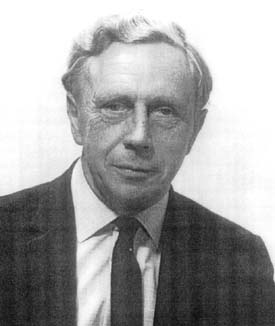


 تاريخ الرياضيات
تاريخ الرياضيات
 الرياضيات في الحضارات المختلفة
الرياضيات في الحضارات المختلفة 
 الرياضيات المتقطعة
الرياضيات المتقطعة
 الجبر
الجبر
 الهندسة
الهندسة 
 المعادلات التفاضلية و التكاملية
المعادلات التفاضلية و التكاملية 
 التحليل
التحليل
 علماء الرياضيات
علماء الرياضيات |
Read More
Date: 4-1-2018
Date: 25-12-2017
Date: 24-12-2017
|
Died: 3 October 2006

John Crank was a student of Lawrence Bragg and Douglas Hartree at Manchester University (1934-38), where he was awarded the degrees of B.Sc. and M.Sc. and later (1953) D.Sc. After war work on ballistics he was a mathematical physicist at Courtaulds Fundamental Research Laboratory from 1945 to 1957 and professor of mathematics at Brunel University (initially Brunel College in Acton) from 1957 to 1981. His main work was on the numerical solution of partial differential equations and, in particular, the solution of heat-conduction problems. In the 1940s such calculations were carried out on simple mechanical desk machines. Crank is quoted as saying that to "burn a piece of wood" numerically then could take a week.
John Crank is best known for his joint work with Phyllis Nicolson on the heat equation, where a continuous solution u(x, t) is required which satisfies the second order partial differential equation
ut - uxx = 0
for t > 0, subject to an initial condition of the form u(x, 0) = f (x) for all real x. They considered numerical methods which find an approximate solution on a grid of values of x and t, replacing ut(x, t) and uxx(x, t) by finite difference approximations. One of the simplest such replacements was proposed by L F Richardson in 1910. Richardson's method yielded a numerical solution which was very easy to compute, but alas was numerically unstable and thus useless. The instability was not recognised until lengthy numerical computations were carried out by Crank, Nicolson and others. Crank and Nicolson's method, which is numerically stable, requires the solution of a very simple system of linear equations (a tridiagonal system) at each time level.
Books:
Articles:



|
|
|
|
تفوقت في الاختبار على الجميع.. فاكهة "خارقة" في عالم التغذية
|
|
|
|
|
|
|
أمين عام أوبك: النفط الخام والغاز الطبيعي "هبة من الله"
|
|
|
|
|
|
|
المجمع العلمي ينظّم ندوة حوارية حول مفهوم العولمة الرقمية في بابل
|
|
|